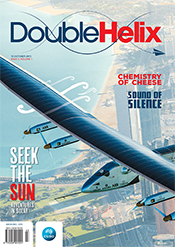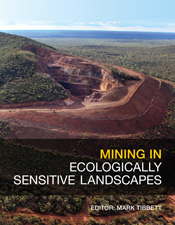Clean Energy, Climate and Carbon
By: Peter J Cook
Outlines the global challenge of decreasing greenhouse gas emissions.
With the general reader in mind, Clean Energy, Climate and Carbon outlines the global challenge of decreasing greenhouse gas emissions. It covers the changing concentration of atmospheric carbon dioxide through time and its causes, before considering the promise and the limitations of a wide range of energy technologies for decreasing carbon dioxide emissions. + Full description
Despite the need to decrease carbon dioxide, the fact is that the global use of fossil fuels is increasing and is likely to continue to do so for some decades to come. With this in mind, the book considers in detail, what for many people is the unfamiliar clean energy technology of carbon capture and storage (CCS). How can we capture carbon dioxide from flue gases? How do we transport it? How do we store it in suitable rocks? What are suitable rocks and where do we find them? How do we know the carbon dioxide will remain trapped once it is injected underground? What does CCS cost and how do those costs compare with other technology options?
The book also explores the political environment in which the discussion on clean energy technology options is occurring. What will a price on carbon do for technology uptake and what are the prospects of cutting our emissions by 2020 and of making even deeper cuts by 2050? What will the technology mix look like by that time?
For people who are concerned about climate change, or who want to learn more about clean energy technologies, including CCS, this is the definitive view of the opportunities and the challenges we face in decreasing emissions despite a seemingly inexorable global increase in energy demand.
- Short descriptionNews
No longer available in a print edition.
Reviews
"Clean energy and climate change are important concerns for many citizens, and this well-illustrated book is designed to educate the public about these subjects. A list of acronyms with their definitions, books and reports for additional reading, and data source references round out the text. Summing up: Recommended. All readership levels."
L.E Erickson, CHOICE Magazine, January 2013
"I thoroughly recommend the book to all teachers contemplating delivering units or lessons on these topics."
Rex Bartholomew, New Zealand Science Teacher, 2012, pp 47
"The book is easy to read, with good basic information and some comments and observations that will provoke thought on the issues surrounding clean energy and the costly and relatively unproductive malaise that seems to be our current approach."
Energy Generation, pp 43
"This is an interesting book to review for someone like myself who is close to technology. It has a seductive title, and offers the promise of tackling controversial issues. Professor Cook is to be congratulated in writing a book for the general reader who wants to be informed. It is perfect for this audience."
John Burgess, Chemistry in Australia, July 2012, pp 36
"Prof Cook’s new book Clean Energy, Climate and Carbon looks at all the realistic options, and some which seem to this reader to be not quite realistic. Cook points out that Australia is blessed with sunshine, wind, 'hot rocks' and other non-fossil reserves. For anyone interested in how Australia is to survive and thrive, this is a fascinating and important book. Tellingly, Cook dedicates it to his children and grandchildren."
Nick Goldie, Cooma-Monaro Express, June 2012
"The book starts with a very good review of the evidence for human-caused global warming and why we are producing so much CO2. I would highly recommend this book for anyone with a science background from year 12 and upwards."
David Denham, Preview Magazine
Details
ePDF | February 2012ISBN: 9780643106826
Publisher: CSIRO Publishing
Available from eRetailers
ePUB | February 2012
ISBN: 9780643106833
Publisher: CSIRO Publishing
Available from eRetailers
Features
A clear exposition on how geosequestration (carbon dioxide capture and geological storage) works, the challenges it faces in widespread adoption and why it could prove to be extraordinarily important.Contents
1 The context2 CO2 and climate change
3 Where and why are we producing so much CO2?
4 Technology options for decreasing CO2 emissions 41 5 The mitigation mix
6 Where and how can we capture CO2?
7 How can we transport CO2?
8 Storing CO2
9 How do we know CCS will be effective?
10 The cost of clean energy
11 The technology and the politics of clean energy
Acronyms
Additional general reading
References to data sources
Index
View the full table of contents.








